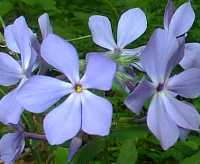| 4
Ranunculaceae (Buttercup)
|
|---|
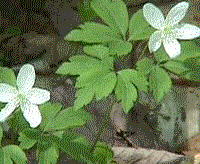
| |
Anemone quinquefolia
Wood Anemone:
5-9 white sepals, 1 flower/plant 4-8", 3 leaves/3-5 toothed leaflets, early summer.
Extremely pungent
Small dry capsule, rhizome.
Greek: Anemone &
Zephyr (West Wind): Flora turns nymph
into flower that withers by the time Zephyr arrives.
|
|
|
Ranunculaceae
|
|---|
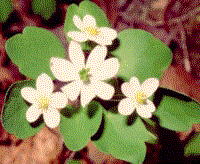
| |
Anemonella thalictroides
Rue Anemone:
Apetalous: 5-10 sepals, basal 3-lobed leaflets in 3 groups of 3,
whorl of bracts under flower stalk, grow singly on slopes
4-8 inches, tuber.
Flowers resemble Wood Anemone, leaves Early Meadow-Rue.
Ares kills Adonis: blood &
Aphrodite's tears bring windflowers.
|
|
|
Ranunculaceae
|
|---|
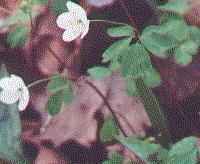
| |
Isopyrum biternatum
False Rue Anemone: only 4-5 smaller sepals,
deeper lobed leaves on flower stems, not directly under flower, in colonies, bottomlands
4-12 inches.
Tuber, yellow stamens.
Cauline leaves with scalelike stipules.
|
|
|
Ranunculaceae
|
|---|
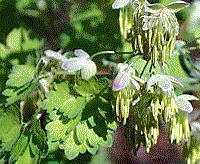
| |
Thalictrum dioicum
Early Meadow-Rue:
alluvial soil.
Apetalous: 4 sepals.
Male flower: yellowish stamens droop like
jellyfish.
Female flower: pink-purplish pistils. Stem from
caudex or rootstock, foliage die back in winter; has dried bracts from previous years.
|
|
|
Ranunculaceae
|
|---|
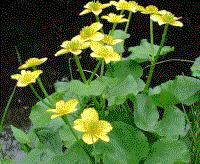
| |
Caltha palustris (cup of swamps)
Marsh Marigold:
Cowslip=cow slop; leaves poisonous to cows; yellow temporary dye.
Edible flower open with sun,
Apetalous: 5-9 sepals many stamens/pistils, shiny buttercup.
Rounded leaves, rhizome.
Sun tolerant, moist soil.
Also native to Eurasia.
|
|
|
Ranunculaceae
|
|---|
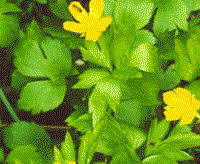
| |
Ranunculus septentrionalis
Swamp Buttercup:
weak, hollow stem, 3-part leaves deeply lobed, stolons root at nodes.
Petals
longer than the spreading, tapering yellow sepals.
Toxic unless dried. Achenes.
|
|
|
Ranunculaceae
|
|---|
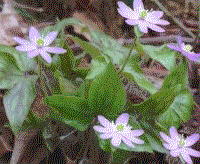
| |
Hepatica acutiloba (H. americana in acid soil)
Sharp-lobed Hepatica (Liverwort):
formerly Anemone.
3 leaves from previous year semi-evergreen photosynthesize during the winter, turn liver-red and die back in spring;
Apetalous: 5-12 sepals yellow stamens, hairy stems.
Eliasome.
|
|
|
|
Polemoniaceae
|
|---|
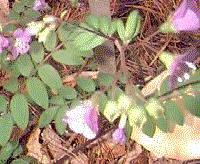
| |
Polemonium reptans
Greek Valerian:
(P. van-bruntiae Jacob's Ladder white stamens protrude) 5 petals form shallow cup over
calyx tube.
Lower pinnate leaflets (ladder).
Anthocyanin H2O soluble in vacuoles: blue in alkaline.
Rhizomes do not creep: self-seed. Sun tolerant.
|
|







